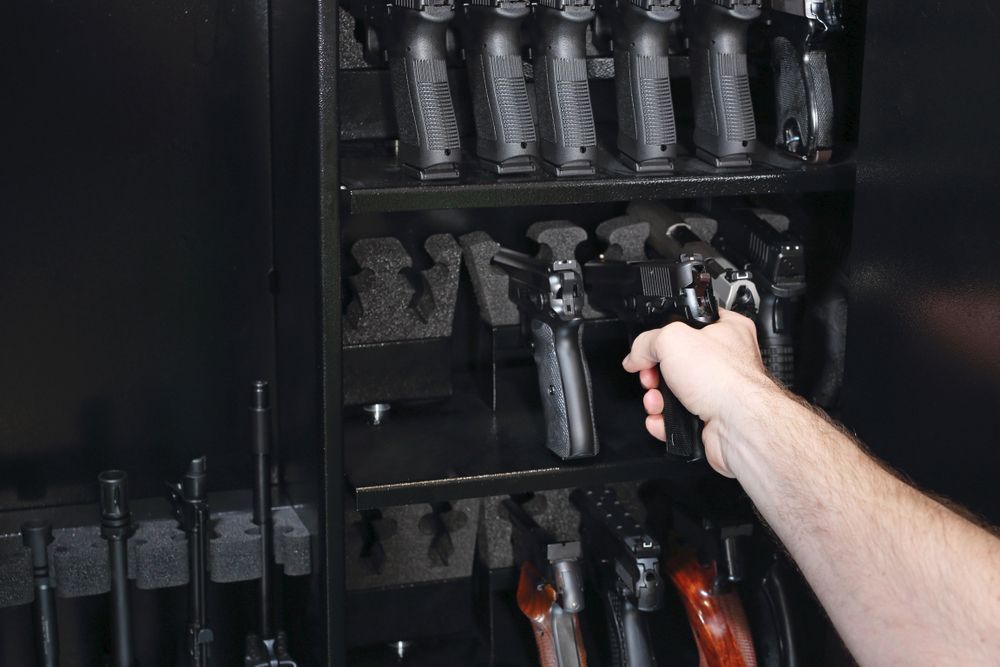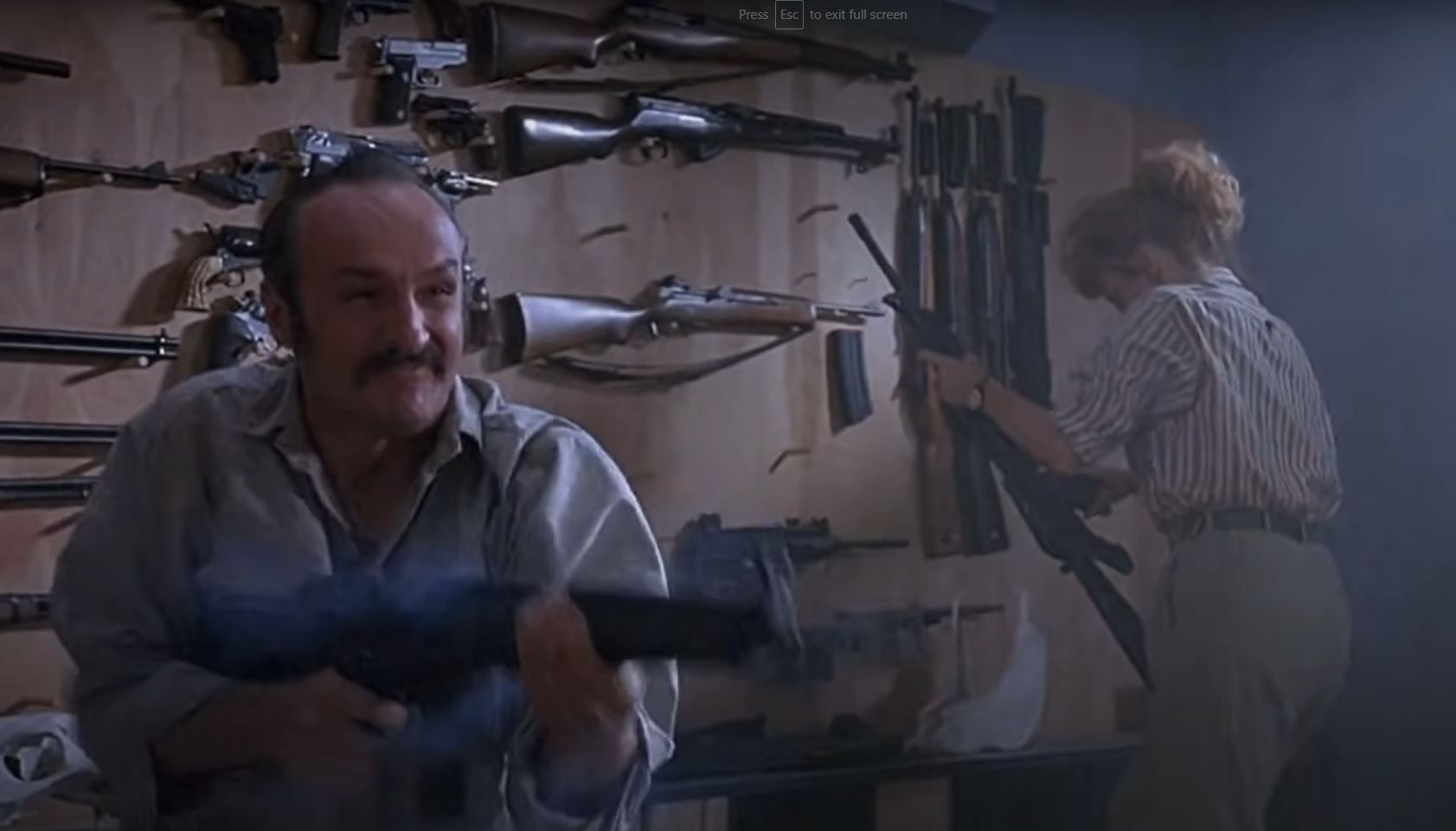How should I store my firearms?
Chances are good that your firearms represent a significant investment.

Chances are good that your firearms represent a significant investment. One that is not purely financial either - firearms are also an investment in your safety and well being. Storing your firearms improperly can result in a host of issues including rust, marring, theft, or in extreme cases, complete destruction.
When deciding how to store your firearms, there are a number of factors you’ll want to take into consideration:
- How quickly do you need access to your firearms?
- Do you live in an area where home burglaries or home invasions are common?
- Do you live where hurricanes and floods are an issue?
- Will anyone else need access to your firearms?
- Do you have small children, people with mental issues, or aging parents in the house?
Storing a firearm properly takes a little bit of cost / benefit analysis on your part. While some firearms might need to be more accessible than others, all of them should be protected in the best way possible. Your analysis should consider accessibility of firearms that you rely on for home defense, environmental threats that may damage your firearms, and theft deterrence.
Hidden in Plain Sight
Hidden in plain sight gun storage options have increased in popularity over the years. You might have seen one without even knowing it. They are pieces of furniture or art that contain a concealed compartment to house firearms. Some examples include wooden flags, picture frames, shelves or end tables - each with a hidden compartment to store anything from a pistol to a rifle or shotgun sized firearm. These options do a good job of providing a location for firearm owners who want a way to quickly access their guns, while making them slightly harder to mark for theft. Compared to gun safes, hidden in plain sight options are relatively affordable. Most of them are lockable to prevent unauthorized access.
The potential drawbacks of hidden in plain sight options are twofold. For starters, while they are easy to access, they do not provide protection against fires or flooding. Additionally, as these options become more popular, they are more easily identified as a high value target to thieves and criminals. Due to their focus on stealth and not strength of protection, they are easily forced open once identified.
Gun Cases
Some firearms owners opt not to secure their firearms in anything other than a gun case, often relegating them to the garage, attic or basement. Storing guns in a case has the benefit of being affordable, and works well if your primary concern is protecting the firearm from damage or dust. They can also be used to prevent children or guests from accessing them since they are (usually) lockable. If unauthorized access is your largest concern, you can take it a step further and add trigger locks for double protection.
While this is usually the cheapest option, it is clearly the least secure. Guns inside cases can easily walk out the door and they provide very little or no protection from water and fire. Additionally, locked cases can be difficult and time consuming to open in an emergency - doubly so if you took the additional step of adding a trigger lock!
Gun Safes
Gun safes are, by and large, the best option for storing your firearms when it comes to securing them from would-be thieves and environmental hazards. Depending on the model, gun safes offer varying degrees of protection against home fires and many include biometric options for quick access.
The largest drawback to gun safes is their cost and weight. For consumers looking for max fire protection, reliable biometric entry, size, and theft protection, gun safes can run into the five figure prices. However, many firearms owners will be surprised at the value that some of the lower priced models offer.
There are a wide variety of options to fit your needs. You can find small safes that will only fit a single pistol, a lock box, with a fingerprint reader for quick access all the way up to 60+ gun safes that need a forklift to move. Some safes even specialize in modularity and can be built in place with common hand tools if you are unable to do a heavy fixed safe.
Any large safe will require some planning for the proper location. Entryway widths and floor load bearing capacity will need to be examined.
Wall Displays
One popular option today are specialty “tactical” walls designed to arrange firearms and accessories using magnets and brackets so the guns are on display and easily accessible. While at first glance this seems like a new approach to gun storage, in reality, this is just the modern version of the old fashion wooden “gun rack” that every rural rancher or cowboy likely had on their wall. There are obvious negatives to this type of storage including accessibility by unauthorized persons, theft and zero protection from fire. On the other hand, tactical walls look darn cool and make your firearms immediately accessible, which is good if want quick access to your gun collection… or you need to fight off giant man-eating worms that broke into your rec room…

“You broke into the wrong goddamn rec room didn’t you!? You bastard!”
General Gun Storage Tips
- Make sure to unload your firearms before storing. Ammunition left in loaded firearms during a fire can cook off and become a deadly safety hazard to first responders.
- Consider storing your ammunition inside of a safe along with your firearms, as this is the safest place for it in the event of a fire.
- Manufacturer’s, such as Allen, offer “gun socks” that are fabric sleeves coated with silicone to protect your firearms from rust. These are ideal no matter your chosen storage medium.
- Consider adding silica gel packs to your safe, case, or chosen form of storage to remove humidity and protect your investment.
- It bears repeating that firearms should always be stored away from young children. If you have children in the house, it may be worth considering adding redundant measures of protection, such as trigger or chamber locks to your firearms.
